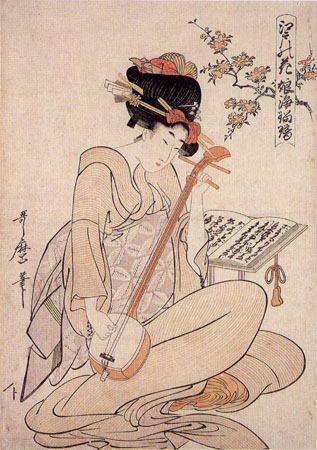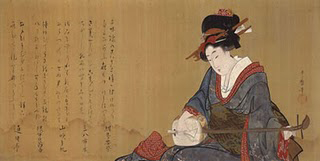Nihon jaia
Shamisen Concert
The shamisen or samisen (三味線, literally "three flavor strings"), also called sangen (literally "three strings") is a three-stringed musical instrument played with a plectrum called a bachi. The shamisen is similar in length to a guitar, but its neck is much slimmer and does not have any frets. Its drum-like rounded rectangular body, known as the dō, is taut front and back with skin in the manner of a banjo, and amplifies the sound of the strings. The skin is usually from a dog or cat, but in the past a special type of paper was used and recently various types of plastics are being tried. On the skin of some of the best shamisen, the position of the cat's nipples can still be seen. The three strings are traditionally made of silk, or, more recently, nylon. The lowest passes over a small hump at the "nut" end so that it buzzes, creating a characteristic sound known as sawari (somewhat reminiscent of the "buzzing" of a sitar, which is called jivari). The upper part of the dō is almost always protected by a cover known as a dō kake, and players often wear a little band of cloth on their left hand to facilitate sliding up and down the neck. This band is known as a yubikake. There may also be a cover on the head of the instrument, known as a tenjin.
Activity in the Festival:
Shamisen Concert.
Masaya Ōhama
Graduated from the Fine Arts School of Music, University of Tokyo (traditional Japanese music, specialty: nagauta Shamisen). He has participated in numerous performances of Kabuki Theater. In Spain he has played, as shamisen performer, for several Japanese restaurants, as well as universities and Japanese cultural events.
More Information about Shamisen:





